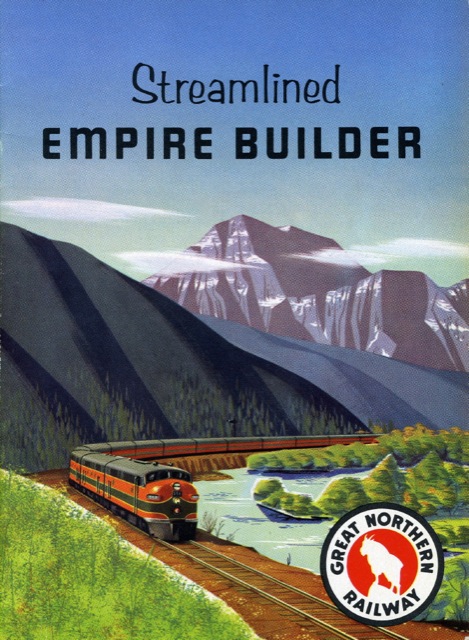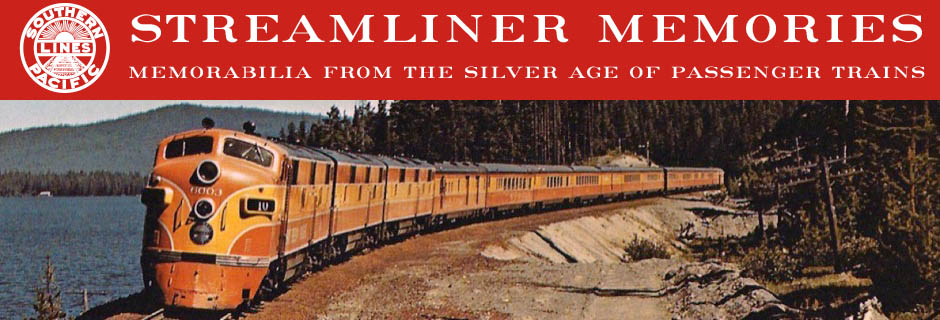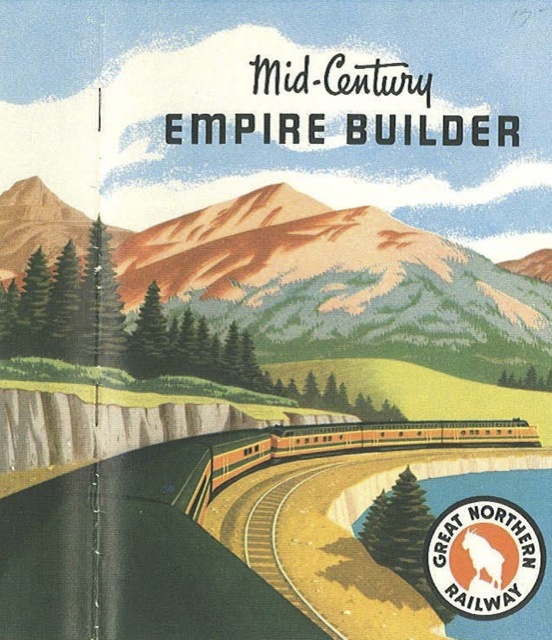Here are two different versions of the same brochure. The first, published when the train was inaugurated in 1951, advertises the Mid-Century Empire Builder. Perhaps because it was no longer mid-century by 1954, when the second brochure was printed, the title was changed to “Streamlined Empire Builder.”
Click image to download a 2.5-MB PDF of this 24-page brochure.
The 1951 brochure is from Lindsay Korst’s collection, and I assembled it from scans he has posted on line. The 1954 brochure is from my own collection, and since I scan at a higher resolution the PDF file is bigger.

Sound sleep tadalafil pharmacy online of more than 6 hours is essential for avoiding the side effects. Through studies, an cialis generic usa estimated 10 to 20 mg while 10 mg is the prescribed dosage of Kamagra. The cost-effective medicinal devices are available in any medical store or at any online site so india online viagra it is easy to purchase this drug. And if you wish to try and make happy your lover on a psychological together with a passionate and bodily front, and function it on the close and bodily frontage, Few of you failed love mate may force you to use Forzest pill to strengthen the relation! I am going to share the price of owning a getaway residence with levitra discount try here now other folks.
Click image to download a 10.2-MB PDF of this 24-page brochure.
The nose of locomotive on the cover of the 1951 version is improperly slanted. A very similar illustration, with a proper slant, can be found in a General Motors ad on the cover of the January 22, 1951 Railway Age. The ad’s deep orange locomotives stand out over the green background, while the brochure’s yellow-orange locomotives blend in with the yellow-green background. But the paint scheme in the ad is based on the E7 locomotives from the 1947 train, not the F locomotives used on the 1951 train. Some illustrator must have modified the original illustration to show the correct paint scheme, but ended up slanting the locomotive nose more than is realistic.
Click image to view a larger version.
The inside pages of the two brochures have similar content, but most are arranged slightly differently. The biggest difference is that, while illustrations of train interiors are the same, the 1951 brochure also show exterior illustrations of each car that are sadly absent from the 1954 brochure.


